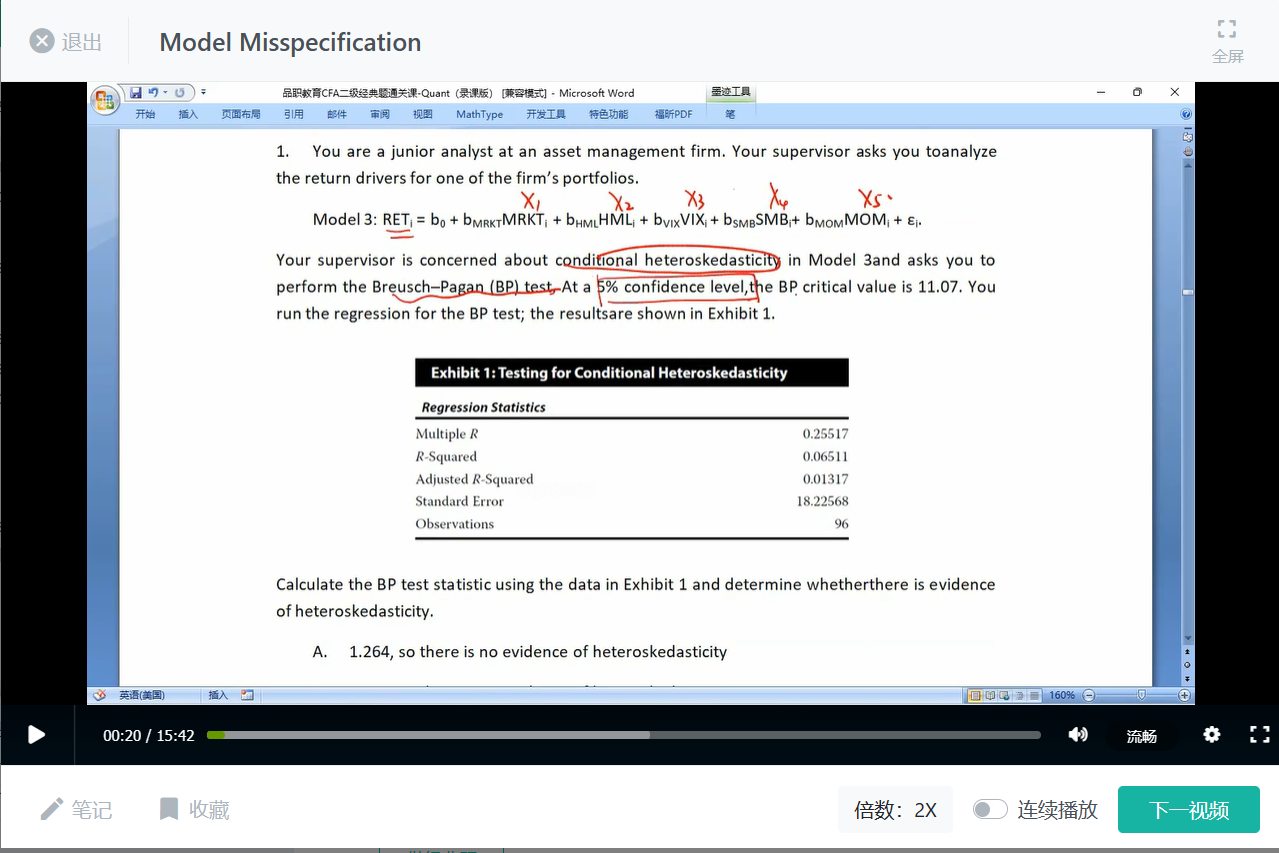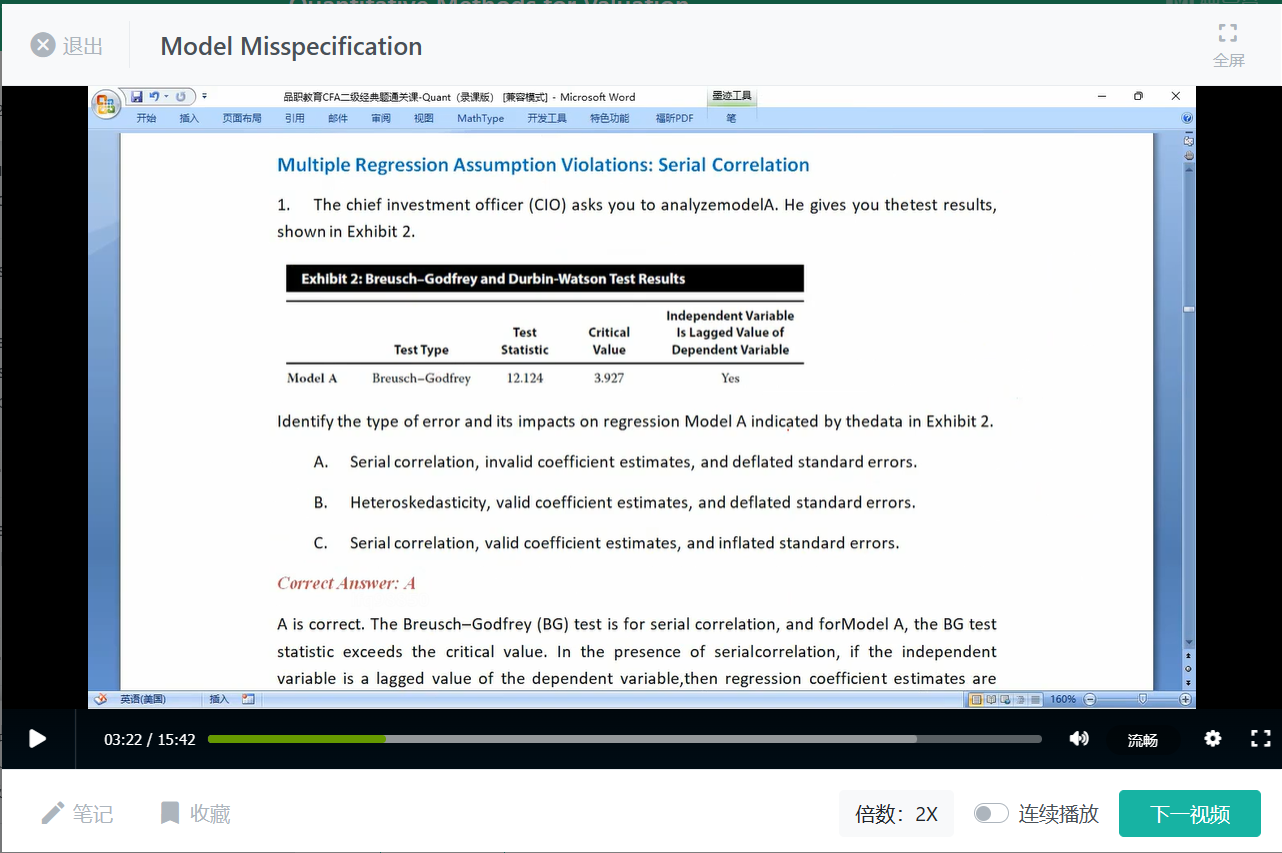NO.PZ2023040502000017
问题如下:
You
are a junior analyst at an asset management firm. Your supervisor asks you to analyze
the return drivers for one of the firm’s portfolios.
Model 3: RETi = b0 + bMRKTMRKTi
+ bHMLHMLi + bVIXVIXi + bSMBSMBi
+ bMOMMOMi + εi.
Your supervisor is concerned about conditional
heteroskedasticity in Model 3 and asks you to perform the Breusch–Pagan (BP)
test. At a 5% confidence level, the BP critical value is 11.07. You run the
regression for the BP test; the results are shown in Exhibit 1.
Calculate the BP test statistic using the data in Exhibit
1 and determine whether there is evidence of heteroskedasticity.
选项:
A.1.264, so there is no evidence of heteroskedasticity
6.251, so there is no evidence of heteroskedasticity
81.792, so there is evidence of heteroskedasticity
解释:
B is correct. The BP test statistic is calculated as
nR2, where n is the number of observations and R2 is from
the regression for the BP test. So, the BP test statistic= 96 × 0.06511 =
6.251. This is less than the critical value of 11.07, so we cannot reject the
null hypothesis of no heteroskedasticity. Thus, there is no evidence of heteroskedasticity.
助教你好。我发现几个module的经典题讲解差两个部分,分别是: multiple regression assumption violation: heteroskedasticity 和 multiple regression assumption violation: serial correlation





